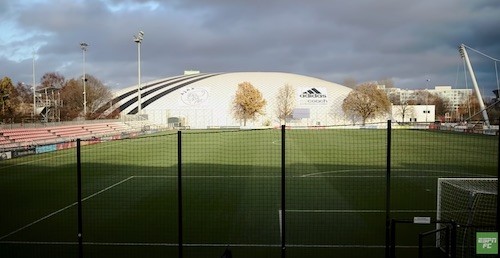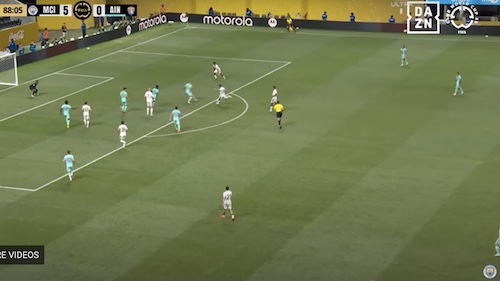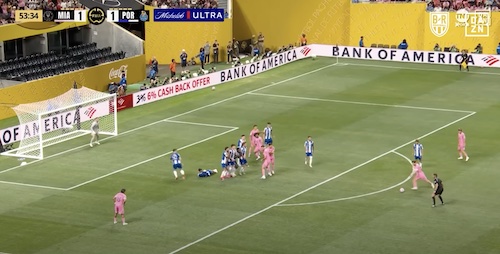Inside Ajax: We visit De Toekomst to find out more about AFC Ajax’s world famous youth soccer academy, speaking to some of the famous names who once played at the club before becoming coaches, including Danny Blind and Bryan Roy, while also getting an insight from business and facilities manager Ed Lefeber.
The AFC Ajax academy continues to be one of the most famous football education institutions in Europe and “the lifeblood” of the club according to former star Danny Blind. What does De Toekomst mean? The Ajax youth soccer academy is called De Toekomst, which correctly means: The Future. After knocking out Real Madrid from the Champions League recently you can see just how right the meaning of the soccer academy is.
Does Ajax have the best youth soccer / football academy in the world?
The AFC Ajax youth academy is one of the most famous football education systems in the world, nurturing a galaxy of young Dutch stars down the years, all trained to play the Ajax way. Before there was Barcelona’s famous youth academy La Masia, it was over at Ajax where all the future soccer stars were created.
The base for grooming this burgeoning talent is De Toekomst, which translates as ‘The Future’. An impressive facility, its 14 hectares feature seven pitches, 14 dressing rooms and a sports hall. Some 200 youth players, aged between seven and 19, are students at the Amsterdam club’s academy, playing in 13 different teams.
“The Ajax youth academy is the lifeblood of this club,” former Ajax player and current assistant coach Danny Blind told UEFA.com. “On the one hand, that has to do with the financial structure. We are not capable of spending large amounts of money on players, which means that you have to develop them yourself.
“Secondly, we try to develop players through a specific culture, a specific philosophy, and to show them in general terms how Ajax want to play football. It is an advantage if players have already played in the same system for many years. So yes, in that sense, it is very important for Ajax.”
Players to have come through that system include Johan Cruyff, Dennis Bergkamp and current first-team coach Frank de Boer. While over more recent years Wesley Sneijder, Klass-Jan Huntelaar and Maarten Stekelenberg have all graduated from Ajax.
“The real success of the youth academy is measured by the amount of players who really added value to the first team,” said the club’s business and facilities manager, Ed Lefeber. “We also look at how many players play for national teams. When the Netherlands played Finland recently, nine out of the 11 players in the starting lineup were developed by Ajax.
“If we, the Netherlands, are second in the FIFA rankings, then that is a criteria you can use. But you are always comparing. You can say that we didn’t develop a player like Lionel Messi in the last ten years, but we did develop Sneijder and Van der Vaart. So you constantly want to develop those types of players.”
NY Times story on the Ajax youth soccer system:
“The youth academy of the famed dutch soccer club Ajax is grandiosely called De Toekomst — The Future. Set down beside a highway in an unprepossessing district of Amsterdam, it consists of eight well-kept playing fields and a two-story building that houses locker rooms, classrooms, workout facilities and offices for coaches and sports scientists. In an airy cafe and bar, players are served meals and visitors can have a glass of beer or a cappuccino while looking out over the training grounds. Everything about the academy, from the amenities to the pedigree of the coaches — several of them former players for the powerful Dutch national team — signifies quality.
Ajax once fielded one of the top professional teams in Europe. With the increasing globalization of the sport, which has driven the best players to richer leagues in England, Germany, Italy and Spain, the club has become a different kind of enterprise — a talent factory. It manufactures players and then sells them, often for immense fees, on the world market. “All modern ideas on how to develop youngsters begin with Ajax,” Huw Jennings, an architect of the English youth-development system, told me. “They are the founding fathers.”
In America, with its wide-open spaces and wide-open possibilities, we celebrate the “self-made athlete,” honor effort and luck and let children seek their own course for as long as they can — even when that means living with dreams that are unattainable and always were. The Dutch live in a cramped, soggy nation made possible only because they mastered the art of redirecting water. They are engineers with creative souls, experts at systems, infrastructure and putting scant resources to their best use. The construction of soccer players is another problem to be solved, and it’s one they undertake with a characteristic lack of sentiment or illusion.”















